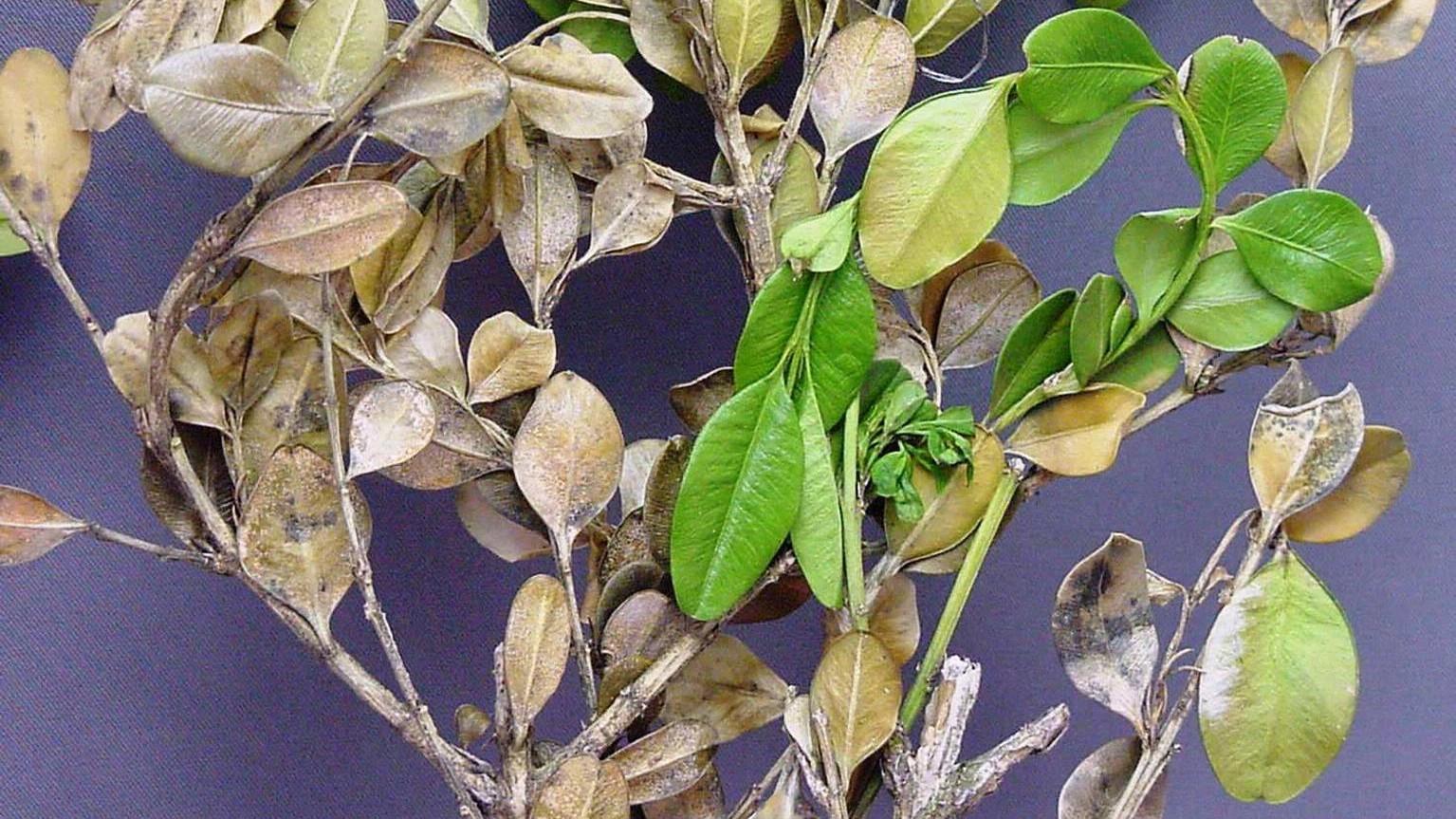
Key points
- Both American and English boxwood are susceptible to this disease caused by the fungi Pseudonectria buxi (formerly Volutella buxi) and Pseudonectria foliicola.
- Before new growth appears in the spring, leaves on the tips of infected branches turn red, then bronze and finally yellow. Infected branches die back.
- Examination of affected branches reveals loose bark and girdling at varying distances from the tips and discoloration of the wood.
- In moist weather the fungus produces salmon pink fruiting bodies on leaves and stems.


